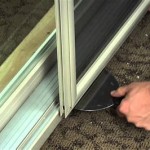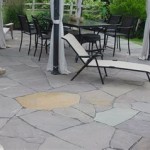How Much Does It Cost to Install a Paver Patio?
A paver patio represents a significant upgrade to any outdoor living space, offering both aesthetic appeal and functional value. However, understanding the financial investment required for such a project is crucial for effective budgeting and planning. The cost of installing a paver patio is not a fixed number, but rather a range influenced by a variety of factors. This article provides a detailed overview of the elements that contribute to the overall expense, enabling property owners to make informed decisions.
The price of installing a paver patio is typically expressed in cost per square foot. This provides a standardized measure that allows for easier comparisons between different projects and contractors. While averages can be useful as a starting point, it is important to remember that the specific characteristics of an individual project will ultimately determine the final cost. The following sections will delve into the key factors that impact the price, providing a comprehensive understanding of the financial aspects involved.
Paver Material Costs and Selection
The type of paver material chosen is one of the most significant drivers of cost. Pavers are available in a wide array of materials, each with its own price point and aesthetic qualities. Options range from basic concrete pavers to more luxurious materials like natural stone and porcelain.
Concrete Pavers: Concrete pavers are generally the most cost-effective option. Their affordability makes them a popular choice for homeowners looking to create a durable and attractive patio without exceeding their budget. The price of concrete pavers can vary depending on the style, color, and size. Basic, uncolored concrete pavers will typically be the least expensive, while more elaborate designs and colored options will command a higher price. While concrete pavers are budget-friendly, they do not offer the same natural aesthetic as other materials, and may require more maintenance to prevent staining or fading.
Brick Pavers: Brick pavers offer a classic and timeless aesthetic. Their warm colors and textured surface add character to any outdoor space. Brick pavers are typically more expensive than concrete pavers, but they offer greater durability and a longer lifespan. The cost of brick pavers can vary depending on the type of brick (e.g., clay brick, concrete brick), the size of the brick, and the manufacturer. Reclaimed brick, salvaged from older structures, can be a charming and environmentally friendly option, but may require more preparation and installation time, potentially increasing the overall cost.
Natural Stone Pavers: Natural stone pavers, such as flagstone, bluestone, and travertine, represent the high end of the paver material spectrum. These materials offer unparalleled beauty and a natural, organic aesthetic. The price of natural stone pavers can be significantly higher than concrete or brick, due to the cost of quarrying, processing, and transporting the stone. The specific type of stone chosen will also influence the price. For example, bluestone is generally more expensive than flagstone. Natural stone pavers require specialized installation techniques and may require more ongoing maintenance to preserve their appearance.
Porcelain Pavers: Porcelain pavers are a relatively new option in the paver market. They offer a modern and sophisticated look, with a wide range of colors and textures available. Porcelain pavers are incredibly durable, resistant to staining and fading, and easy to clean. The cost of porcelain pavers is generally comparable to natural stone pavers. While they offer many advantages, porcelain pavers require a perfectly level and stable base to prevent cracking or chipping. This may necessitate more extensive site preparation, adding to the overall cost.
Beyond the material itself, shipping costs can add to the overall expense, particularly for natural stone sourced from distant quarries. The complexity of paver shapes and patterns also contributes. Intricate designs require more cutting and fitting, increasing labor costs and material waste.
Site Preparation and Labor Costs
Site preparation and labor costs account for a significant portion of the total paver patio installation expenses. These costs are influenced by the condition of the existing site, the complexity of the patio design, and the prevailing labor rates in the region.
Excavation and Grading: The first step in preparing the site involves excavation. This entails removing any existing vegetation, topsoil, and other debris to create a level surface for the patio base. The depth of excavation will depend on the type of soil and the desired finished grade of the patio. In areas with unstable soil, deeper excavation may be necessary to ensure a solid foundation. Grading is the process of leveling the excavated area to ensure proper drainage. A slight slope should be incorporated into the design to allow water to run off the patio surface. Proper grading is essential to prevent water from pooling on the patio, which can lead to damage and safety hazards.
Base Layer Installation: After excavation and grading, a base layer of compacted gravel is installed. The base layer provides a stable and level surface for the pavers to rest on. The thickness of the base layer will depend on the type of soil and the anticipated load on the patio. In areas with heavy foot traffic or furniture, a thicker base layer may be required. The gravel should be compacted in layers using a plate compactor to ensure a solid and stable foundation. The base layer should extend beyond the perimeter of the patio to provide additional support.
Sand Bedding: A layer of sand, often referred to as a bedding layer, is spread over the compacted gravel base. This layer provides a final leveling surface for the pavers and helps to cushion them. The sand should be screened and leveled to ensure a smooth and even surface. The thickness of the sand layer should be uniform throughout the patio area to prevent uneven settling. The sand bedding allows for minor adjustments to be made during paver installation to ensure a consistent and level surface.
Paver Installation: The installation of the pavers is a labor-intensive process that requires skill and precision. Pavers are typically laid in a specific pattern, such as a running bond, herringbone, or basketweave. The choice of pattern will affect the amount of cutting and fitting required, which can impact labor costs. Pavers should be carefully aligned and spaced to create a uniform and aesthetically pleasing surface. After the pavers are laid, they are compacted using a plate compactor to ensure they are firmly seated in the sand bedding.
Joint Sanding and Sealing: After the pavers are compacted, the joints between them are filled with sand. The sand helps to lock the pavers in place and prevent weeds from growing in the joints. Polymeric sand, which contains additives that harden when wet, is often used to provide a more durable and weed-resistant joint. Sealing the pavers can help to protect them from staining and fading. Sealers are available in a variety of finishes, including matte, satin, and gloss. The choice of sealer will depend on the desired aesthetic and the type of paver material.
Labor costs vary significantly depending on the region, the experience of the installation crew, and the complexity of the project. Projects involving difficult site access, intricate designs, or specialized paver materials will necessitate more skilled labor and a longer installation timeframe, thereby increasing labor costs.
Additional Cost Considerations
Beyond the core expenses of materials and labor, numerous additional factors can impact the overall cost of a paver patio installation. These considerations may not be immediately apparent but can significantly influence the final budget.
Permits and Inspections: Depending on the location and the size of the patio, building permits may be required. Obtaining permits can involve application fees, inspections, and potential delays. It is important to check with the local building department to determine the permit requirements before starting the project. Failing to obtain the necessary permits can result in fines and delays.
Drainage Solutions: In areas with poor drainage, additional drainage solutions may be necessary to prevent water from pooling on the patio. This may involve installing French drains, catch basins, or other drainage systems. The cost of drainage solutions will depend on the complexity of the system and the amount of excavation required.
Retaining Walls and Edging: If the patio is located on a slope or requires a defined edge, retaining walls or edging may be necessary. Retaining walls can be constructed from a variety of materials, including concrete blocks, natural stone, and wood. Edging can be used to contain the pavers and prevent them from shifting. The cost of retaining walls and edging will depend on the materials used and the complexity of the design.
Lighting and Electrical Work: Adding lighting to the patio can enhance its aesthetic appeal and functionality. Lighting options include pathway lights, spotlights, and string lights. Electrical work may be required to install the lighting, which can add to the overall cost. It is important to hire a qualified electrician to ensure that the electrical work is done safely and according to code.
Furniture and Accessories: While not directly related to the installation of the pavers, furniture and accessories can add to the overall cost of creating an outdoor living space. Patio furniture, umbrellas, and outdoor rugs can enhance the comfort and aesthetic appeal of the patio. The cost of furniture and accessories will depend on the quality and style of the items chosen.
Contingency Funds: It is always wise to set aside a contingency fund to cover unexpected costs that may arise during the project. Unexpected costs can include unforeseen site conditions, material shortages, or changes to the design. A contingency fund of 5-10% of the total project cost is recommended.
Factors such as demolition of existing structures, removal of large trees or rocks, and access limitations for equipment can also impact costs. It is crucial to obtain detailed quotes from multiple contractors, ensuring that all potential cost factors are addressed upfront. Properly accounting for these additional considerations is essential for accurate budgeting and avoiding unexpected expenses during the paver patio installation process.

How Much Does It Cost To Build A Paver Patio

Paver Cost Landscaping Network

How Much Does A 20x20 Paver Patio Cost The Sealer

Affordable Paver Installation Costs For Stunning Outdoor

How Much Does It Cost To Install Patio Pavers Whitehouse Landscaping

How Much Does A Paver Patio Cost

How Much Does A Paver Patio Cost To Install 2025 Data Angi

So How Much Does A Paver Patio Actually Cost Hardscape Toledo

2025 Paver Patio Cost Installation Costs

Cost To Install Stone Patio Pavers 2024 Diy Or Not
Related Posts








